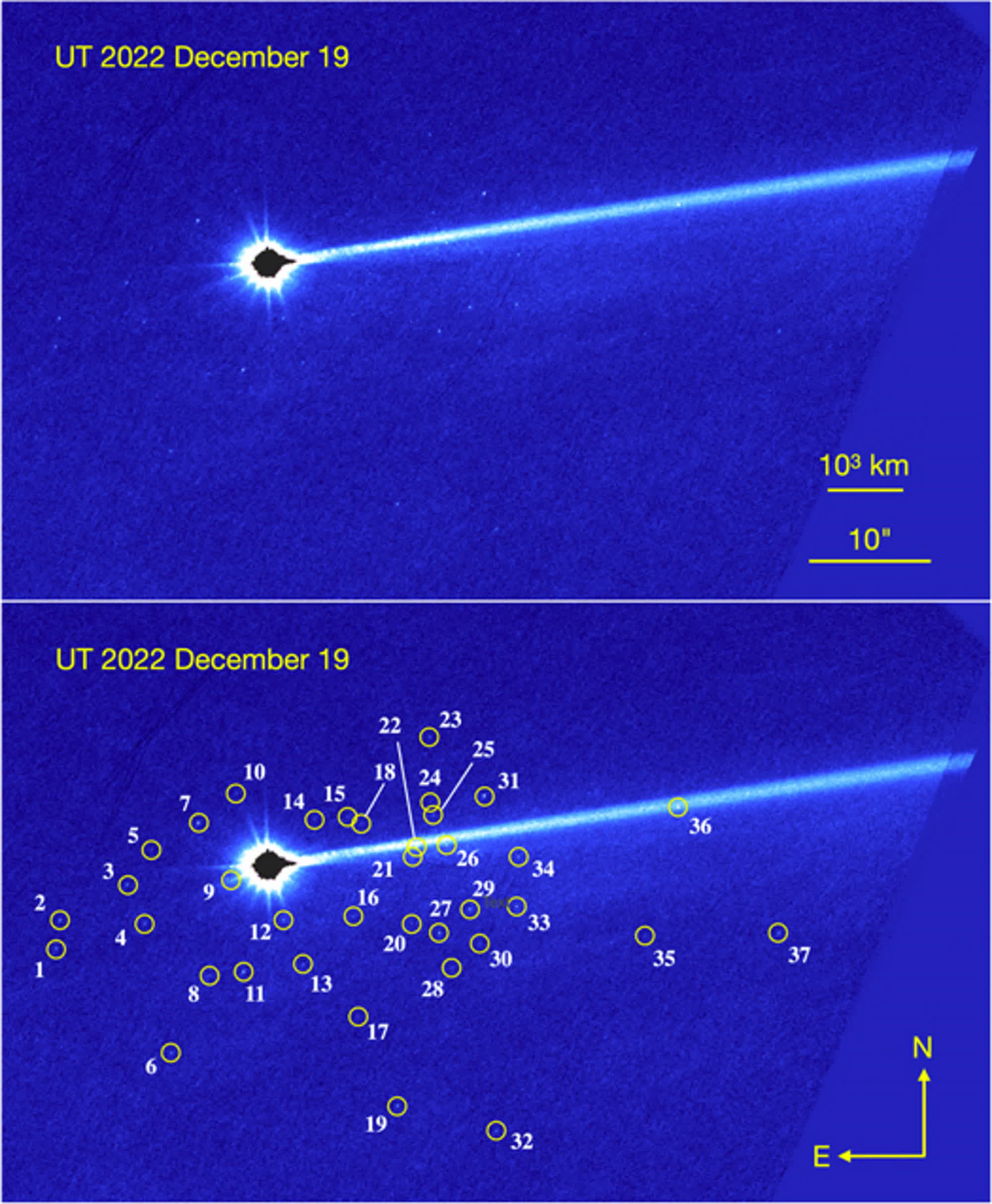Why it matters: Scientists are continuing their investigation into the aftermath of the DART collision with Dimorphos, which successfully changed the orbit of the small celestial object. Having confirmed humanity’s capability to deflect potentially hazardous targets with sufficient anticipation and resources, researchers are now studying the specific effects of the DART impact on the asteroid.
Another study on the DART mission was recently published in The Astrophysical Journal Letters. The study examined deep space images captured by the Hubble Space Telescope, focusing on the ejecta produced from the DART spacecraft’s impact into asteroid Dimorphos. This impact resulted in the release of a long tail of clearly visible debris, which, as previous studies indicated, played a significant role in achieving higher-than-expected deflecting results.
The images taken by Hubble have now unveiled an “extensive population” of comoving boulders orbiting the dual asteroid system. The largest boulder measures around 7 meters in diameter and is estimated to have a geometric albedo of 0.15. Hubble identified a total of 37 distinct boulders, with their combined mass amounting to approximately 0.1 percent of Dimorphos’ mass before the impact.
The boulders are orbiting Dimorphos and the larger asteroid Didymos at a speed that’s “slightly larger” than the system’s overall gravitational escape velocity. As a result, they will eventually depart the asteroids and head into outer space. To observe the roughly 40 orbiting boulders, scientists had to capture multiple long-exposure images of the tail-like phenomenon left by the impact. They later combined these images to filter out noise.

Furthermore, the researchers were able to confirm that Dimorphos is a conglomerate of rubber and rocks held together by gravitational attraction. Upon shattering on the asteroid’s surface, the DART probe “freed” some of those rocks from the asteroid’s gravity due to the sheer kinetic force of the impact, rather than ejecting large piles of material.
The study estimates that the 40 liberated boulders covered approximately two percent of the entire asteroid’s surface, which aligns with a crater measuring 50 meters across. Dimorphos’ surface is likely highly porous, limiting the seismic energy generated by DART from penetrating deeply into the asteroid’s interior.
Studying an asteroid impact from a distance can be a challenging speculative exercise, but the DART mission will soon have some closer confirmations thanks to the HERA mission by the European Space Agency. The probe is scheduled to launch in October 2024, and it will commence orbiting the dual-asteroid system in 2026.
Source link